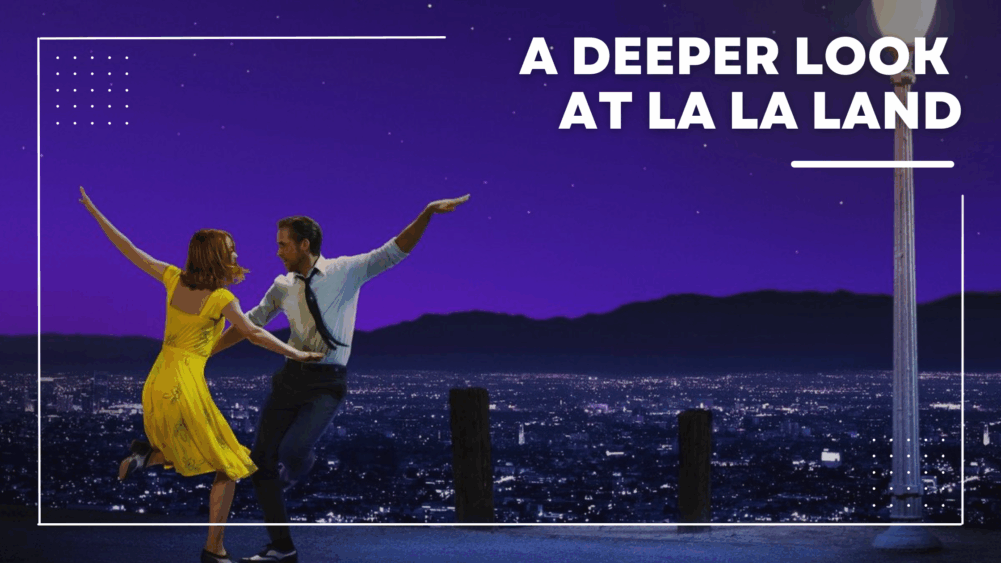Damien Chazelle’s La La Land continues to captivate audiences years after its 2016 release. A recent rewatch reveals just how meticulously crafted the film is—especially in its use of color symbolism, music, and emotional storytelling. Originally seen by this writer during its theatrical debut, the film resonates even more deeply with time.
Overview
La La Land, directed by Damien Chazelle and released in 2016, is a musical that follows the romance and personal growth of two aspiring artists in Los Angeles: Sebastian (Ryan Gosling), a passionate jazz pianist, and Mia (Emma Stone), an actress chasing her dream. With vibrant cinematography, mesmerizing dance sequences, and emotionally charged music, the film beautifully balances the magic of ambition with the painful realities of sacrifice.
Plot Summary
Mia, an aspiring actress struggling with constant rejection, finds herself drawn to the sound of a piano and walks into a jazz bar—only to have a rocky first encounter with Sebastian. Later, they meet again at a party where Sebastian plays 80s pop begrudgingly by the poolside. Their initial friction eventually gives way to admiration and love as they connect over shared dreams and talents.
Key Themes and Symbolism
The Language of Color
One of the most striking features of La La Land is its bold use of color. In an age where many modern films lean toward muted tones, this film’s vivid reds, yellows, blues, and greens evoke the visual aesthetic of the 1950s and ’60s. But beyond their visual appeal, these colors carry symbolic meaning throughout the film:
- Green – Shifting Relationships
Green often appears at key turning points in Sebastian and Mia’s relationship. For instance, Mia wears a green dress when she decides to break up with her boyfriend and run to Sebastian. Green also features in scenes of emotional intimacy and conflict—like the café with green awnings where they grow closer, or the green curtains behind them during their first argument. As the story progresses, green begins to symbolize distance and separation. - Blue – Harsh Reality
Blue is used when characters confront reality. When Sebastian’s sister questions his jazz career, she wears a blue shirt. Mia dons a blue dress while singing about her future, illuminated by red lighting—signifying a conflict between dreams (red) and reality (blue). Blue also appears during scenes of rejection, tension, and, most poignantly, in the final scene—representing both the fulfillment of Sebastian’s dream and the reality that he and Mia couldn’t be together. - Red – Dreams and Desire
Red symbolizes ambition, longing, and unattainable dreams. Whether it’s the glowing bar sign that lures Mia in, or her red jacket during a pivotal audition, red represents the passion that drives both characters—even when that passion leads them apart. - Purple – Love and Romance
Purple is the color of their shared romantic moments. The sky turns purple as they dance under the stars. Mia wears purple dresses on dates, and purple props surround them in scenes of emotional closeness. But it also contrasts with their later conflict—such as the purple-lit theater where Sebastian fails to show up for Mia’s play. - Yellow – Moments of Change
Yellow marks key moments of transition. Mia wears a yellow dress to the party where she reconnects with Sebastian. Sebastian’s friend Keith, who later invites him to join a band that alters his career path, wears yellow as well.
When the Music Stops
In a musical, silence can be just as powerful as song. One of the most impactful scenes is when the music stops entirely: the dinner argument.
Sebastian prepares a surprise dinner for Mia, hoping to spend time together during a rare break from his tour. But when he suggests she join him on tour, their conversation turns into a painful argument. He joined the band not out of passion, but because he overheard Mia on the phone with her mother, and wanted to provide stability. But Mia, believing his band gig was temporary and hoping he’d eventually open his own jazz club, feels betrayed. Her anger stems not only from being left behind, but from watching him compromise on his true dream.
During their fight, Mia looks Sebastian straight in the eye—because she believes in his dream more than he does in that moment. Sebastian, unable to meet her gaze, reflects his inner guilt and self-doubt. When he lashes out and belittles her dream in return, the music vanishes. It’s a metaphor for the harmony between them breaking. The stillness marks the moment their paths begin to diverge.
The World They Dreamed But Never Shared
The film’s final scene is perhaps its most moving.
Mia, now a successful actress, is married with a child. One evening, she and her husband enter a jazz bar—only to realize it’s Sebastian’s. The two lock eyes, and without exchanging a word, Sebastian plays their song. As he plays, a dreamlike montage unfolds: an alternate reality in which they stayed together, achieved their dreams, got married, and lived happily. It’s beautiful, but it never happened.
La La Land resonates deeply not because it’s a simple love story, but because it captures the cost of chasing your dream. Mia and Sebastian sacrificed their relationship for their individual ambitions. It’s a reality many of us know too well—choosing passion over partnership, or love over career. Even if your story doesn’t match theirs exactly, chances are you’ve had a moment where you thought: “What if I had chosen differently?”
Final Thoughts
The beauty of La La Land lies not just in its visuals or music, but in how it reflects the dreams, doubts, and decisions we all wrestle with. Watching it again with a deeper understanding of its symbolic use of color adds a whole new layer of meaning.
So I encourage you—watch it again. Notice the colors, the silence, the symbolism. And when it’s over, ask yourself: who did you think of?
